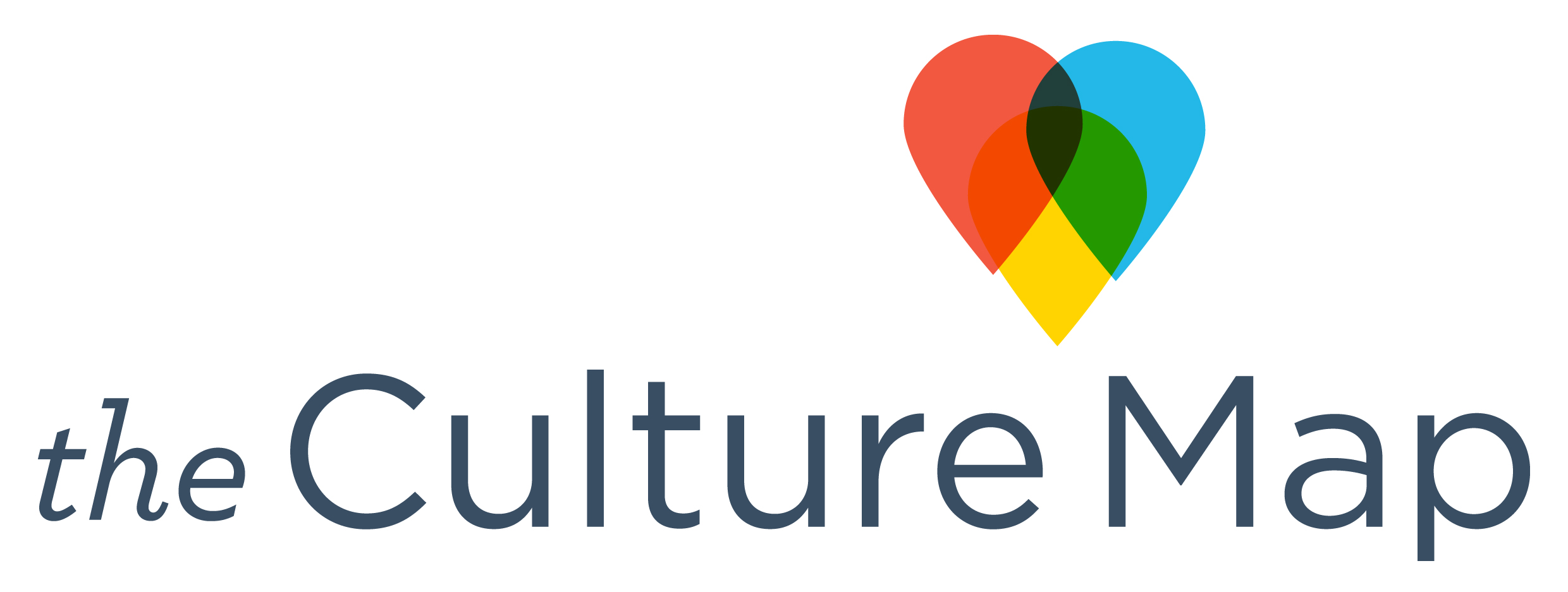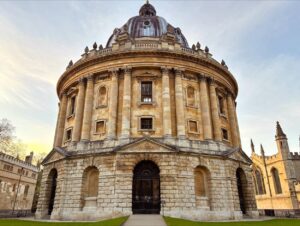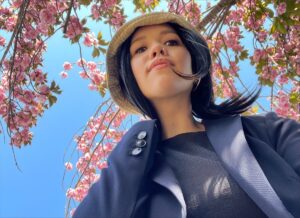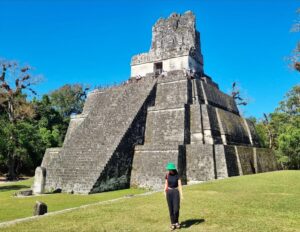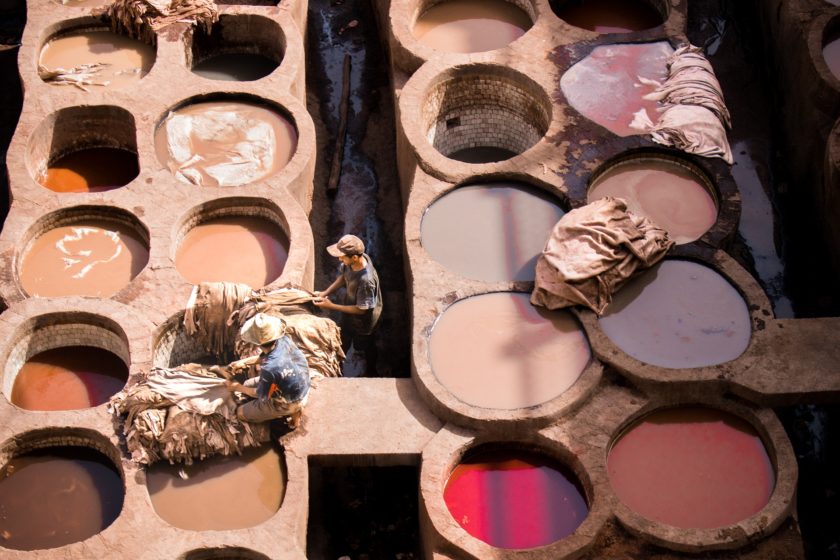
Leather is synonymous with Morocco, it possesses a long history of originality and craftsmanship, and plays an important role in the country’s economy and cultural identity.
On deciding to visit Fes, one of the driving factors was to see the traditional methods involved in making Moroccan leather at Chouara Tannery, the famous tannery of Fes located in the old medina, a UNESCO World Heritage Site.
Navigating the old medina
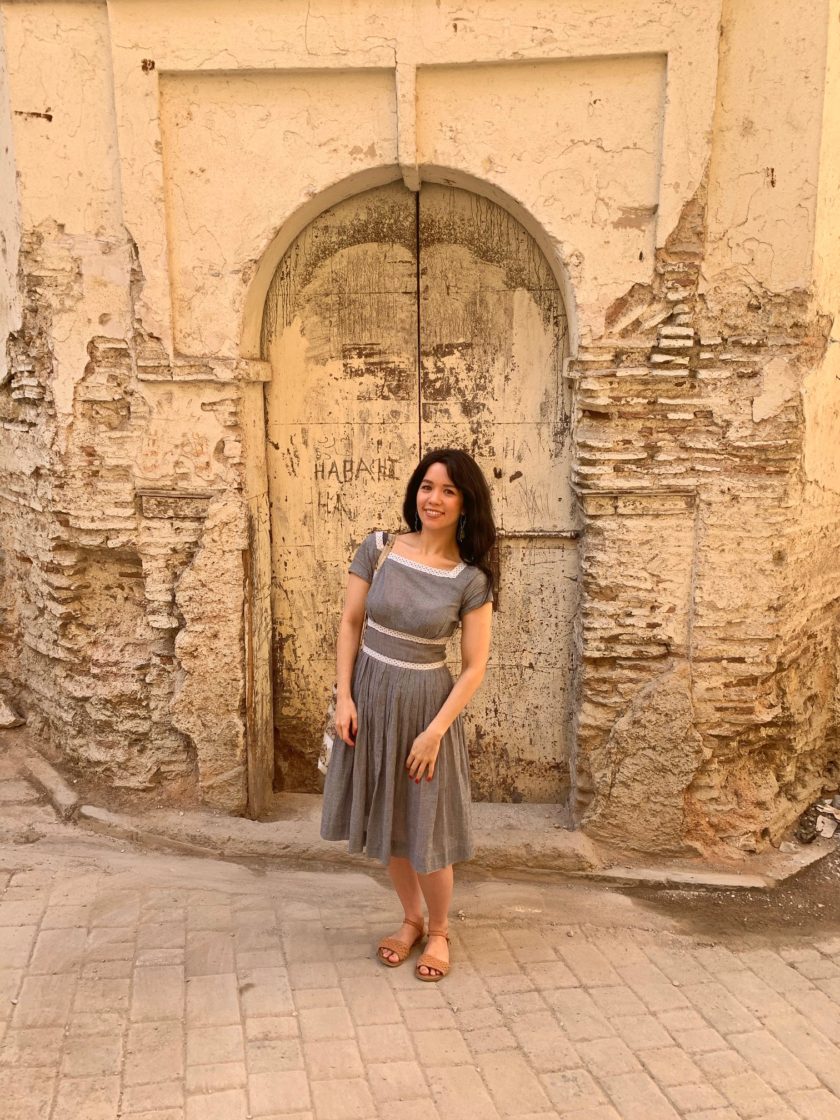
Chouara Tannery is the city’s biggest tannery and one of its most iconic attractions. But I must warn you, navigating your way through the maze of the old medina is like trying to complete a rubix cube, it’s not an easy task, especially if you’re actually on a mission to find a particular place. The day we arrived my brother and I tried to do it on our own, turning right and left, and eventually ending up on the same street we began at without finding Chouara Tannery. Accepting defeat we decided to return the following day armed a local guide.
At Chouara Tannery
Upon meeting our guide, we followed her steps as she twisted and turned through the medina, passing hundreds of stalls, each specialising in a variety of goods, from carpets to sequined slippers and hand-carved wooden boxes to intricate silverwear and piles of dried fruits and nuts. She knew the place like the back of her hand, or at least it seemed that way, but she admitted that she still gets lost occasionally, after all it’s the largest medina in the world.
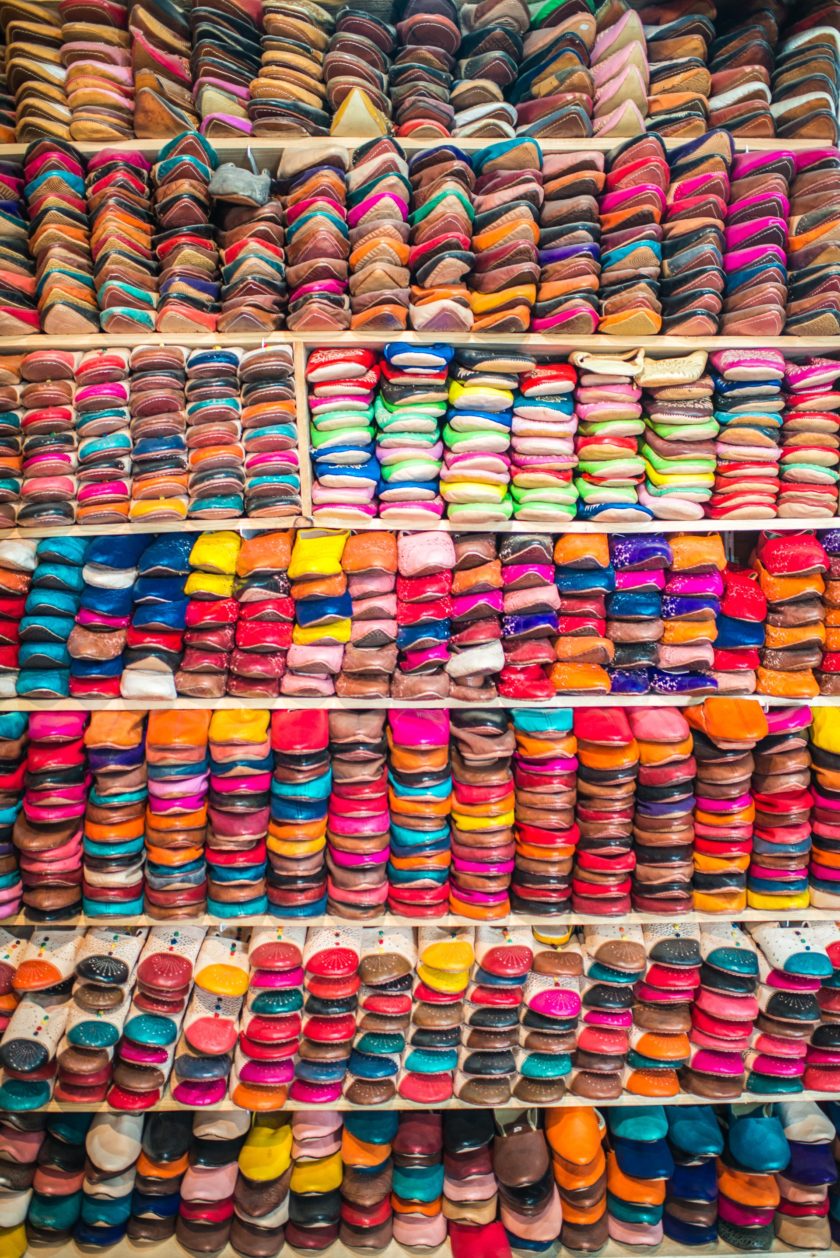
Eventually, we arrived at a leather shop, one of several to have a terrace on the top floor that overlooks the tannery. Before we made our way up the steps, an employee handed us each a sprig of mint leaves and warned, ‘You’ll need this for the smell’ and then he started laughing.
As we stepped onto the terrance, the smell was the first thing that hit me. It stunk, the guy wasn’t kidding! I rammed the mint up my nostrils before taking another breath.
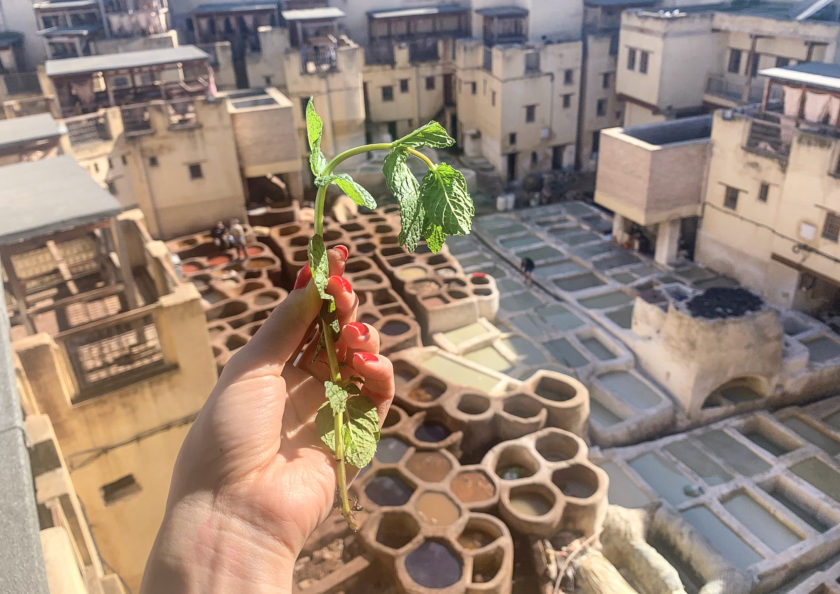
However, putting the smell aside, the sight before me was incredible. The stone vessels below looked less like a factory floor and more like an artist’s watercolour palette on a huge scale. The liquid colours ranged from blood red to white, with a little of everything in between.
Each vessel is filled with dye or white liquids and there’s enough room in them to fit in at least one fully grown man and tens of cow hide. But looking from above, I still don’t think you can fully appreciate the scale of the tannery unless you’re on the ground standing next to the vessel, in fact, each one could probably fit in two or three men if they needed to work quickly together on a single hide. It can’t be an easy job.
How the leather is made
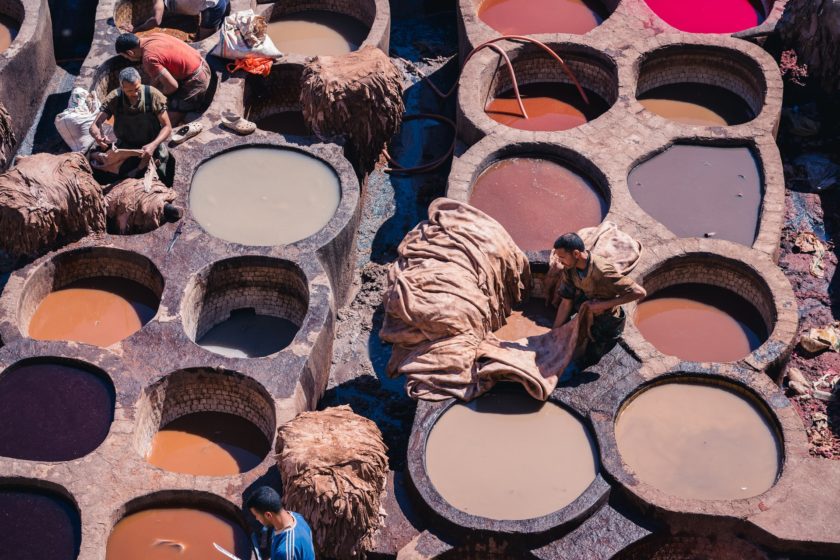
Hides of cows, sheep, goats, and camels are processed by first soaking it in the white liquids. This liquid is made from a mixture of substances, including – wait for it – cow urine and pigeon poo. This explains why the tannery smells so bad! But these pongy ingredients play a vital role in softening the leather.
This process takes two to three days and prepares the hides to readily absorb the dyes. They are then soaked in the dyeing solutions, which use natural colorants such as poppy for red, indigo for blue, and henna for orange.
The men stand thigh-high in the dye and agitate the hides like human washing machines. Some of the tanners wore shorts, others wore waterproof overalls similar to fishermen.
When the desired colours have been achieved the skins are pulled out of the pits, trimmed, and laid out to dry on surrounding rooftops before being moved inside to be cut and sewn into the desired goods you see all over Morocco.
Guided tours in and around Fez
Where to stay in Fez
Staying in the heart of the Medina (Old Town) allows you to immerse yourself in Fez’s ancient charm. Many riads, traditional Moroccan guesthouses with inner courtyards, are located here, offering an authentic experience. You’ll be within walking distance of historic sites like the Al-Qarawiyyin Mosque located within the bustling souks.
If you’re looking for somewhere to little bit quieter and calm, you could also stay just outside the Medina. Places such as Batha and Bab Boujloud are close to the medina but offer a slightly quieter atmosphere. You’ll find a mix of riads and mid-range hotels, providing easy access to both the medina and modern conveniences.
